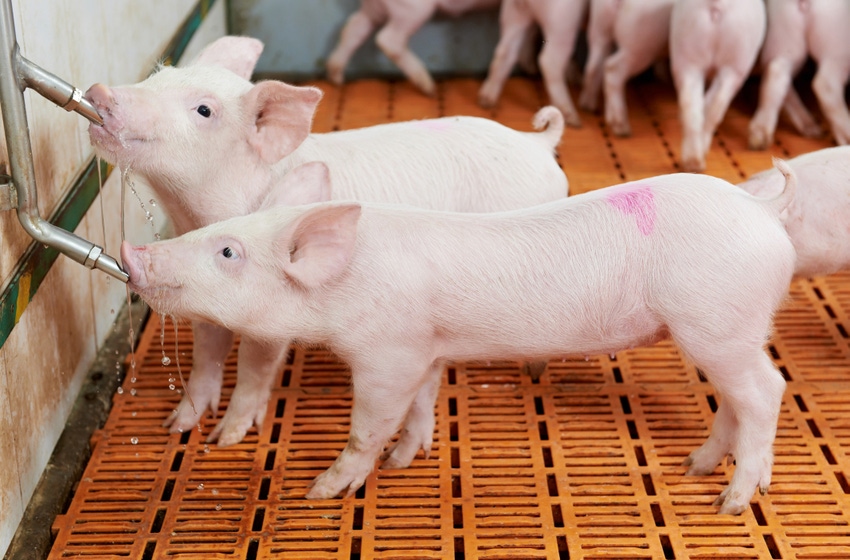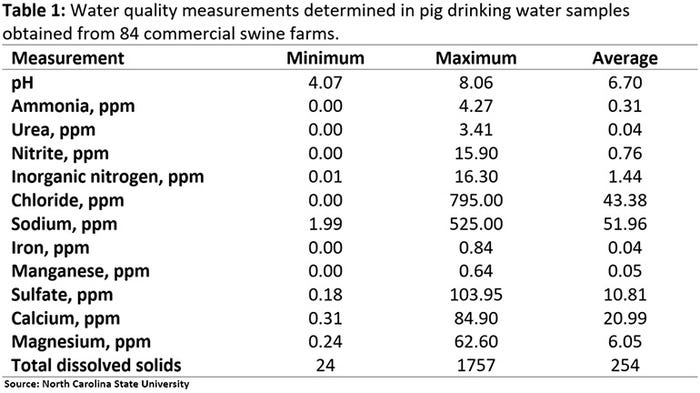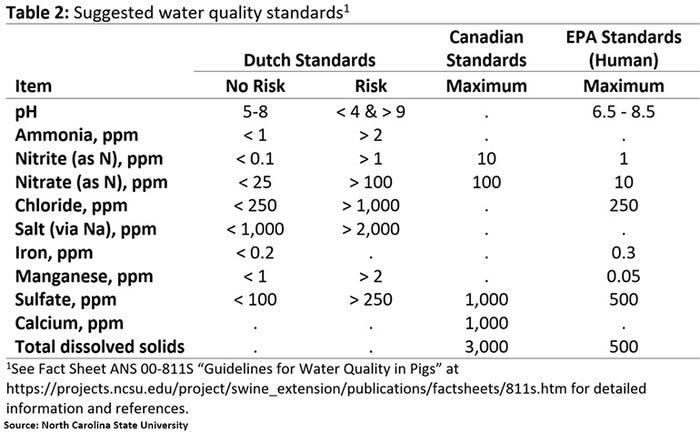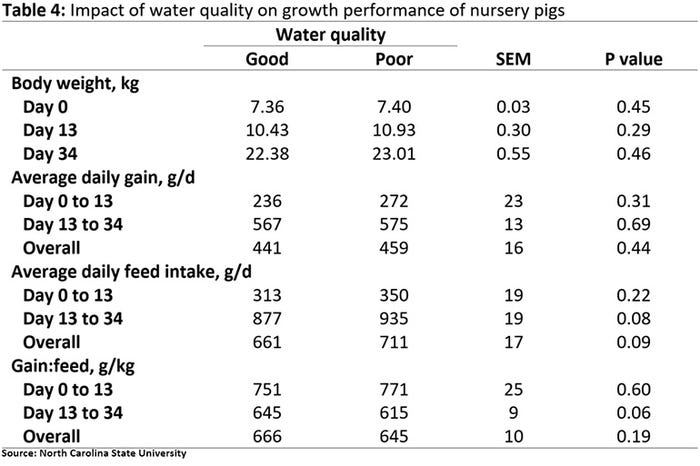Producers should closely monitor the quality of the drinking water provided to pigs and make sure it is within the quality standards suggested.
January 3, 2019

By Eric van Heugten and Jon Holt, North Carolina State University Department of Animal Science
The quality of drinking water provided to pigs is thought to be important, and poor water quality is likely to negatively impact growth performance and health of pigs. However, studies evaluating the impact of water quality on pig performance are limited. We evaluated water quality in water samples collected from 84 commercial pig farms and subsequently determined the impact of poor water quality on the performance, water intake and water wastage in newly weaned pigs.
A summary of water quality measurements showing minimum, maximum and mean concentrations of select quality measures is provided in Table 1. In general, the water quality determined in these samples was good and only few samples exceeded certain (most notably ammonia, nitrite and iron) recommendations provided in Table 2. Ammonia and nitrite indicate potential bacterial contamination or contamination with run-off water from fertilized land. High levels of iron may promote bacterial growth and can cause blocked water nipples, but is generally not a health risk.


Our next step was to determine the potential impact of poor water quality on the performance of newly weaned pigs. We specifically were interested in newly weaned pigs because they come to completely rely on drinking water when they are weaned, rather than sow milk, and are often dehydrated upon arrival into the nursery.
We conducted a study with 42 pigs (21 days of age), housed three to four pigs per pen, using a total of 12 pens. Pigs were blocked by body weight and sex, and allotted to one of two water treatments (six pens per treatment). Treatments consisted of good water quality (water contained 0.04 parts per million of iron and 52.8 ppm of sulfate and had a pH of 6.41) and poor-quality water (water contained 1.12 ppm of iron, 151.2 ppm of sulfate and had a pH of 3.38).
Water treatments were provided immediately after weaning for the first 13 days of the 34-day study. Water was supplied in plastic tubes fitted with a water nipple (water flow rate ranged from 138 to 472 milliliters per minute at fill levels from two to 14 liters) for each individual pen. Each tube was placed in a basin that allowed us to capture wasted water in order to determine water intake as accurately as possible. Water disappearance and water wastage were measured daily for 13 days. Pigs were fed a complex prestarter diet (1.6% lysine) for the first 13 days followed by a simple starter diet (1.3% lysine) for 21 days.
Water disappearance was not different (P = 0.18) between pigs given control water and pigs given poor quality water (Table 3). However, pigs wasted more water when provided poor quality water (0.30 liters per day) compared to control water (0.17 L/day; P = 0.01). Water intake, corrected for water wastage, did not differ between treatments (P = 0.91).

No differences were detected in body weight, average daily gain or feed efficiency of nursery pigs due to water quality treatments during the two feeding phases or overall. However, feed disappearance tended to be greater for pigs receiving poor-quality water during Phase 2 (P = 0.08) and overall (P = 0.09) and feed efficiency tended (P = 0.06) to be worse in pigs provided with poor-quality drinking water.
It should be noted that the different qualities of drinking water were supplied only during the 13-day Phase 1 period, suggesting that the effects observed were carryover effects. The results of this study suggest that the drinking water quality of samples evaluated in this study were generally within reasonable expectations and that we were not able to demonstrate significant reductions in nursery pig growth performance when supplying relatively poor-quality drinking water.
Nonetheless, producers should closely monitor the quality of the drinking water provided to pigs and make sure it is within the quality standards suggested. Further studies will be conducted to evaluate the impact of drinking water with more severe quality concerns on performance and health characteristics of pigs.

You May Also Like



